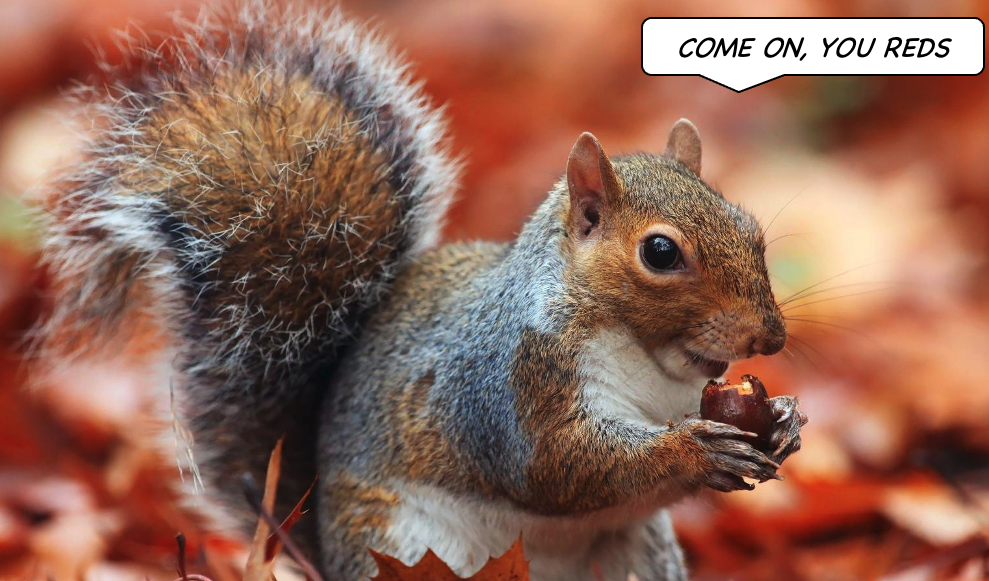Parable of the squirrels
Jump to navigation
Jump to search
|
Touchy topics addressed through the prism of squirrels™
|
Once upon a time, there was discord in the kingdom of the squirrels. The red squirrels rose up and complained to the statistician-general.
They said, “O, Great Statistician! The grey squirrels have more nuts than us! ”
The greys couldn’t be reached for comment, because they were too busy munching on all their nuts.
The statistician mumbled something about multivariate regressions but the reds would not be deterred. Their spokesquirrel continued:
- “Look: on average, grey squirrels have more nuts than red squirrels. This cannot be denied. Is it not so?”
- “It is so,” said the Statistician. “The data are very clear about this. Grey squirrels have twenty percent more nuts, on average, than reds.”
- “Exactly. This is unjust! It is due to illegitimate hierarchical structures in the squirrel community, which unfairly skew nut distributions towards those great big fat, greasy grey squirrels.”
- “Hey!” said a passing grey squirrel. “Enough of the fat-shaming. And the trash-talking about grease, for that matter.”
- “Therefore,” continued the Red Leader, “as we red squirrels are systematically repressed, it follows as a matter of inexorable logic, that this red squirrel, Errol, must have been deprived by — how much did you say?”
- “Twenty percent?”
- Yes! Twenty percent! So Errol should have 20% more nuts than he currently has...”
- “I should?” said Errol.
- “Don’t let the side down!” hissed Red Leader. “I’m trying to get you more nuts!”
- “Oh, yes! I should!” said Errol.
- “ ... and this grey squirrel, Frank, has too many, and should have twenty percent fewer.”
- “What?” said Frank, crinkled his brow, but got on with munching.
- “Therefore, O, Great Statistician, we propose that henceforth we systematically deprive Errol, and grey squirrels like him, of nuts, and give them to Frank, and similar red squirrels, to correct the imbalance.”
The Great Statistician thought about it for a while, and then said,
- “Now, the average for the red squirrels is the sum of existing nut allocations to re squirrels, divided by the total number of red squirrels. Is that not so?”
- “Yes, that is so.”
- “And it is the same for the grey squirrels?”
- “Yes, it is so. And that would be true, too, of the median, mode and range.”
- “Let’s come back to the median in a little while. But in many cases these are historical data, are they not?”
- “Yes, O Great Statistician, they are.”
- “Now, it seems to be either there has been a systematic preference in favour of grey squirrels, or there has not?”
- “There has been! There has been!”
- “And if there has, we should be able to find where it has happened in the historical record?”
- “Well —”
- “For the average that you point to is derived purely from historical cases. Is that not so?”
- “It is so.”
- “That might be difficult. And a bit awkward.”
- “But if you could not find any historical examples of actual injustice in individual nut allocations, would it not also follow, that the data do not represent a systematic inequality at all, being as they are a mathematic function of of those individual nut allocations?”
- “Well me might not be able to prove them but we know it is”
